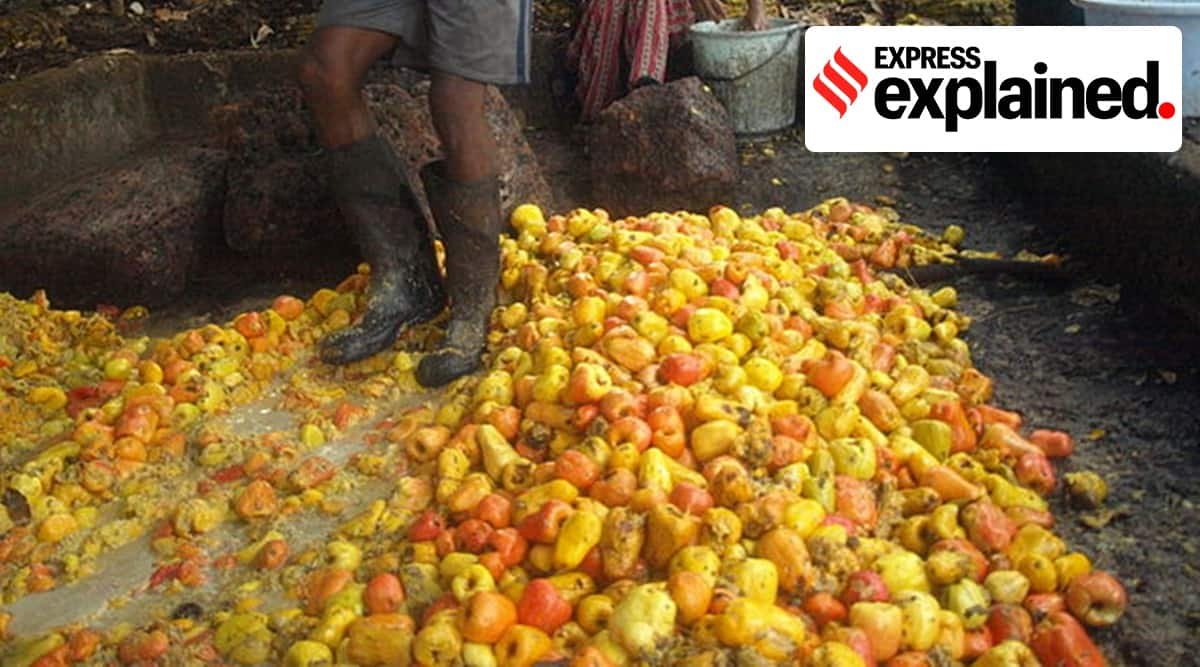[ad_1]
Last week, Goan cashew (kernel) got the geographical indication (GI) tag.
Goa Chief Minister Pramod Sawant hailed the recognition as a great opportunity for the cashew industry in the state and “a milestone towards Swayampurna Goa mission”.
In a post on X, formerly Twitter, Sawant said, “Goan cashew has a long and cherished heritage and this GI status helps to preserve our legacy.”
A GI tag is conferred upon products originating from a specific geographical region, signifying unique characteristics and qualities. Essentially, it serves as a trademark in the international market. It is given by the Geographical Indications Registry in Chennai.
What does the GI tag mean for the cashew industry in Goa?
Cashew manufacturers and processors in Goa said they hoped the GI tag would help consumers differentiate between authentic Goan cashews and cashews sourced from outside the state, which are often marketed as ‘Goan cashews’.
The application for the GI tag for the Goan cashew — derived from the Portuguese name ‘caju’ or ‘kaju’ in Konkani — was filed by the Goa Cashew Manufacturers’ Association (GCMA), with the Department of Science, Technology and Waste Management, Government of Goa, acting as facilitator.
Rohit Zantye, GCMA president, said, “Goa cashew nuts are an integral part of Goan identity and over the years have become synonymous with Goa. Tourists travelling to Goa make it a point to carry Goan cashews and use them for gifting.”
Zantye said in the past few years, a chunk of the cashew market has been captured by small traders from other states, who sell cheaper imported cashews by labelling them as ‘Goan cashew’ for profiteering.
“There are about 300 shops in Calangute alone selling cashews from Benin, Ivory Coast, Ghana, Guinea Bissau, Tanzania, and from other Indian states, marketing them as Goan cashew. These traders and processors do not comply with the norms of quality, packaging, weighing, etc. and products are often of inferior quality. We had received complaints from tourists. All this affects ‘brand Goa’,” he said.
The influx of cheaper cashews has meant that several processing units and manufacturers in Goa have been unable to sell all their produce within the state, and have had to find markets outside, curtail production, or shut factories. Higher minimum wages and compliance norms than in states like Maharashtra, Tamil Nadu, Gujarat and Andhra Pradesh have also contributed to the decline in sales for traditional Goan cashew processors.
Zantye said the processing units have dwindled down from 40 in 2005 to over 15 at present.
A cashew processor in Goa, requesting anonymity, said, “Earlier, 80 per cent of our sale was in Goa. But now it is difficult to compete on the price front. These smaller traders do not have a permanent labour force. They can avoid fixed input costs of larger factories and labour welfare, and evade compliance. From the naked eye, the consumer cannot tell the difference between Goan cashew or imported cashew. The difference in colour is marginal. The Goan cashew is sweeter in taste.”
Madhav Sahkari, GCMA member and president, Goa Cashew Producers Association, said that unless there is strict action against illegal marketing practices, the GI tag would not have much of an impact.
“Benin cashews have a better yield than Goan cashews, and are being sold at lower prices. Typically, the Goan cashew is organic and better in taste and it has a unique flavour. The problem is that the compliance is poor. Big producers, who have volumes and economies of scale, can compete, but since the cashew market is unorganised to a large extent, the relatively smaller producers in Goa are struggling,” he said.
Sahkari said the GI tag would be useful for export too.
Agriculture Minister Ravi Naik said earlier last week that the government would crack down on illegal marketing practices.
How did cashew come to Goa and become a contributor to the economy?
Cashew was native to northeast Brazil in Latin America and was introduced to Goa by the Portuguese in the 16th century (1570). At the time of its introduction on Indian coasts, cashew was known mainly as a crop for afforestation and soil conservation. Historical records cited by the GCMA in its GI application state that Christian missionaries imported high yielding varieties from Latin American countries and cultivated them extensively in Goa. However, the economic value of cashew nuts became known about a century after its introduction.
The story goes that the edible value of cashew nut was discovered by Goan prisoners exiled to the Portuguese territory of Africa (Mozambique) during Goa’s freedom movement in the mid-18th century.
According to a research thesis by Murelle Maria Leonildes Da Costa titled ‘History of Trade and Commerce in Goa 1878-1961’, the first cashew factory in Goa started operations in 1926 and the first consignment of cashew kernels was exported in 1930.
Cashew production gradually evolved from a cottage industry to a large-scale one, facilitating foreign trade because of demand, mainly in the USA.
According to Da Costa’s thesis, in the 10 years before Goa was liberated in 1961, it exported on average over Rs 20 lakh worth of processed cashew nuts, some of which were locally grown and others imported and processed in seven units.
Most Read
“The cashew production was not enough to meet the requirements of cashew nut processing units and, therefore, a substantial quantity had to be imported from the Portuguese colonies in Africa… On an average, about 1500 tonnes of processed cashew nuts used to be exported to the United States of America, Japan, Saudi Arabia and West Germany,” the thesis said.
In 1959-60, the Board of External Trade granted loans to cashew-nut factory owners to advance the industry by importing raw material from Mozambique. It also sought to create a demand for Gaon products in foreign markets by promoting participation of local industries in international fairs.
The import of nuts from Portuguese East Africa induced foreigners to establish factories in Goa due to the lower import duty, favourable port dues, shipping and clearing expenses, lower rents, wages, and salaries. By 1961, the cashew processing industry accounted for about 60 per cent of industrial production in Goa, a bulk of which was exported.
[ad_2]
Source link







